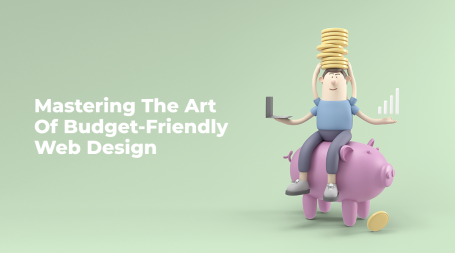As a college student studying web design, you are embarking on an exciting journey that will shape your career in the digital world. To help you navigate this path successfully, we have compiled a list of 12 essential web design tips that will enhance your skills and ensure that your designs stand out from the crowd. Additionally, for those seeking additional guidance in their academic journey, considering options like “write my paper for me” services can be a helpful resource. From organizing your design files to staying up-to-date with the latest trends, these tips will set you on the path to becoming a successful web designer.
1. Stay Organized with Named Layers and Groups
As your web design projects become more complex, it is crucial to maintain organization in your design files. One of the best ways to achieve this is by naming your layers in design software like Photoshop or Illustrator. By giving each layer a descriptive name, you can easily locate and edit specific elements of your design without wasting time. Additionally, using groups to organize related layers will further enhance your workflow and ensure that your designs are well-structured.
Pro Tip: Use descriptive names for your layers and groups, such as “navigation,” “header,” or “image slider,” to easily identify and modify elements within your design.
2. Think Like a Developer
A successful web designer not only creates visually appealing designs but also considers the practicality of implementing those designs on a website. To excel in web design, it is essential to think like a developer. Familiarize yourself with basic HTML and CSS to understand the limitations and possibilities of web development. This knowledge will enable you to create designs that are not only visually stunning but also feasible to build and maintain.
Pro Tip: Understanding the basics of web development will allow you to collaborate effectively with developers and ensure that your designs can be implemented seamlessly.

3. Draw Inspiration from the Web
Inspiration is a crucial aspect of web design. When you find yourself lacking creativity, turn to the vast resources available on the web. Explore design blogs, websites, and social media accounts to discover innovative design ideas and stay up-to-date with the latest trends. Analyze and deconstruct successful websites to understand how they effectively utilize color schemes, typography, layouts, and user experience.
Pro Tip: Use online tools like Buzzsumo to search for the latest news and top influencers in web design, helping you stay informed and inspired.
4. Keep Up with Design Trends
Web design is a dynamic field that constantly evolves with new styles and techniques. To stay relevant and produce modern designs, it is essential to keep up with the latest design trends. Subscribe to design blogs, follow industry experts on social media, and join relevant Facebook groups to stay informed about emerging trends and best practices. By incorporating these trends into your designs, you can create visually appealing and engaging websites.
Pro Tip: Continuously update your design skills by attending web design conferences, workshops, and online courses to stay ahead of the curve.
5. Back up Your Work
Digital files are susceptible to loss or corruption, so it is crucial to back up your work regularly. Cloud storage services like Dropbox or Google Drive provide secure and convenient options for storing your design files. By backing up your work, you can protect yourself from potential data loss and easily access your designs from any device, ensuring that your hard work is always safe and accessible.
Pro Tip: Schedule regular backups or use automatic syncing services to ensure that your design files are consistently backed up without the risk of human error.
6. Utilize Post-it Notes for Organization
In the digital age, it may seem old-fashioned, but the humble post-it note can be a valuable tool for web designers. Use post-it notes to jot down important information such as page sizes, hex codes, fonts, or design ideas. By having these notes visible on your desk or computer, you can easily reference them and keep track of essential details while working on your designs.
Pro Tip: Use different colored post-it notes to categorize information, making it easier to find and reference specific details at a glance.
7. Develop Your Unique Style
While it is important to be versatile in web design, developing your own unique style will set you apart from other designers. Experiment with different design techniques, color palettes, and typography to create a distinctive visual identity for your work. By infusing your designs with your personal creative flair, you can leave a lasting impression on clients and stand out in the competitive web design industry.
Pro Tip: Continuously explore new design styles and experiment with different visual elements to refine and evolve your unique design style.

8. Practice, Practice, Practice
As with any skill, practice is key to becoming a proficient web designer. Take advantage of every opportunity to practice your craft, whether through coursework or personal projects. By dedicating time to refine your design skills, you will gain confidence and expertise in various design software, techniques, and formats. The more you practice, the more polished and professional your designs will become.
Pro Tip: Challenge yourself with design exercises and create a portfolio of your best work to showcase your skills and progress as a web designer.
9. Embrace the Principle of “Less Is More”
In web design, simplicity often reigns supreme. Strive for clean and minimalist designs that prioritize functionality and user experience. Avoid cluttering your designs with unnecessary elements and focus on highlighting key information. By adopting a “less is more” approach, you can create intuitive and visually appealing websites that engage users and effectively convey your message.
Pro Tip: Use whitespace strategically to create breathing room and draw attention to important elements on your web pages.
10. Design with Mobile-Friendliness in Mind
With the increasing use of mobile devices, designing websites that are mobile-friendly is essential. Consider how your designs will adapt to different screen sizes and ensure that they provide an optimal user experience across devices. Designing for mobile-first allows you to prioritize important content and streamline your designs for smaller screens.
Pro Tip: Test your designs on various mobile devices and use responsive design techniques to ensure that your websites look and function seamlessly on smartphones and tablets.
Conclusion
As a web design student, you have an exciting journey ahead of you. By following these 12 essential web design tips, you will develop the skills and knowledge necessary to succeed in this evolving field. Stay organized, think like a developer, seek inspiration, keep up with trends, back up your work, utilize post-it notes, develop your unique style, practice consistently, embrace simplicity, prioritize mobile-friendliness, and most importantly, enjoy the process of creating visually stunning and user-friendly websites.
Remember, web design is a continuous learning process, so always stay curious, explore new techniques, and push the boundaries of your creativity. With dedication and perseverance, you can build a successful career as a web designer and make a lasting impact in the digital world.
“Web design is not just about creating visually appealing websites. It’s about solving problems, enhancing user experiences, and effectively communicating messages. Stay curious, embrace challenges, and never stop learning.” – Thunderbolt Digital















